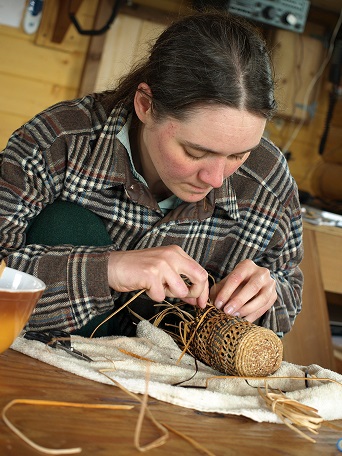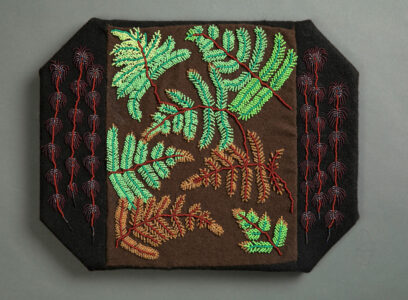Theresa Woldstad
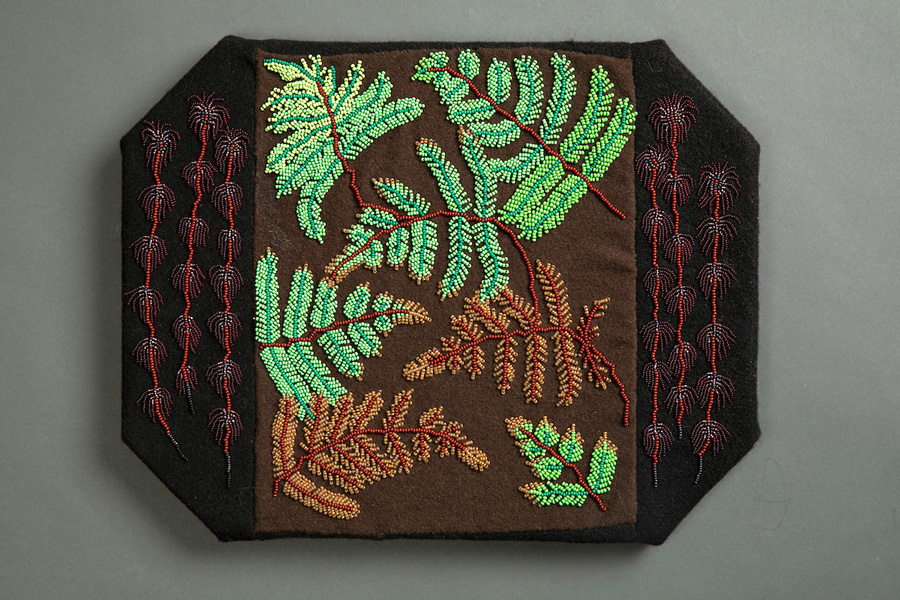
Beaded Boreal Flora
There is an art to science and a science to art; both are distinct, yet both flourish together.
The extent of the boreal forest in Alaska is found south of the Brooks Range and north of the Alaska Range. This area is home to the Athabascan people who are known for their elaborate geometric patterns and flowing floral artistic beaded designs. Many traditional floral patterns were introduced from missionaries and French Canadian Traders that were popular during the 19th century in Europe. Today, many of these European floral patterns continue to be used along with a few native species. My goal of Beaded Boreal Flora was to focus on some of the less commonly illustrated native flora. The first piece is Alaskan Wild Iris, a traditional beaded pair of winter mittens. Irises are my mother’s favorite flower and I wished to illustrate the native Iris setosa that my mother grew up with along the river banks of the boreal forest. The second piece explores native flora as well as an important pollinating insect of the boreal forest. The piece Forest Bumble Bees features the amply named forest bumble bee (Bombus lapponicus sylvicola) among Alaskan fireweed (Chamerion angustifolium). Utilizing the recommended Bumble Bees of Alaska field guide, I found it quite humorous to discover one of the first true bumble bees I could identify in the boreal forest was the forest bumble bee. The final piece explored the truly underrepresented boreal forest flora in Athabascan beading, mosses of the black spruce forest understory. The piece Feather and Peat Mosses illustrate splendid feather moss (Hylocomium splendens) and the midway peat moss (Sphagnum magellanicum). This piece illustrates the difference between the hanging branch structures of the midway peat moss and the branching feather-like pleurocarpous growth form of the splendid feather moss. I was quite lucky to work with biologists Merritt Turetsky and Michelle Cailin Mack as consultants who provided photos and advice concerning taxonomic illustrations to translate these beautiful structures into my beadwork.
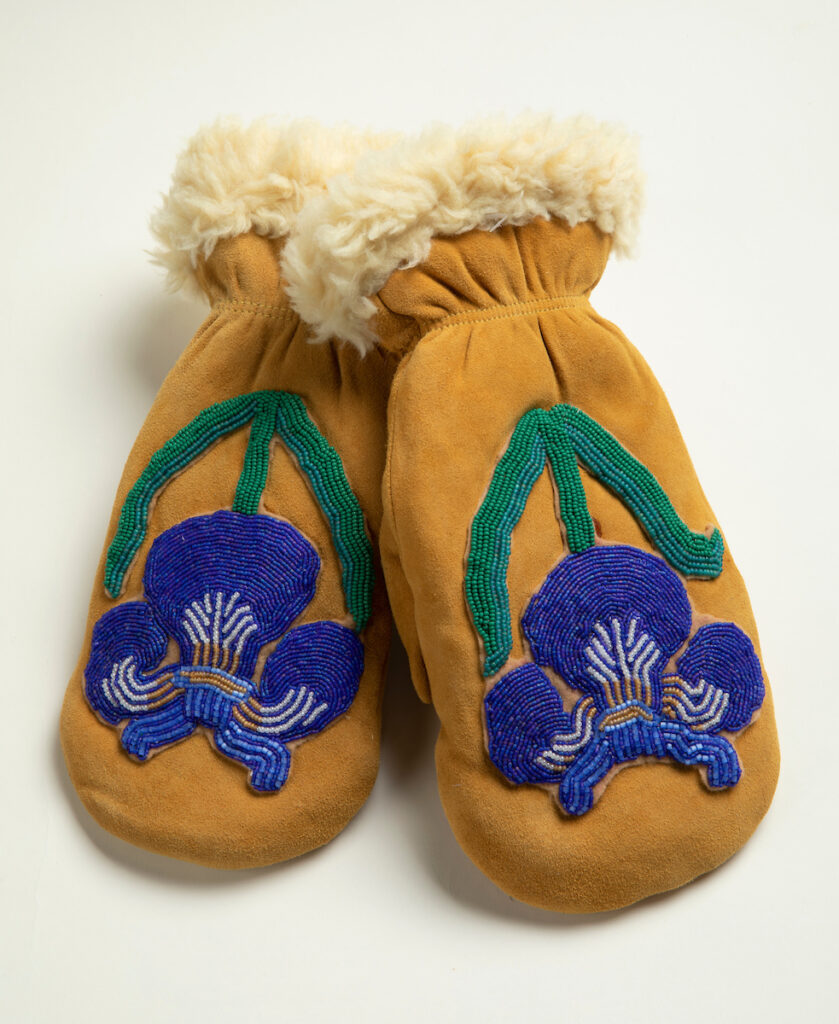
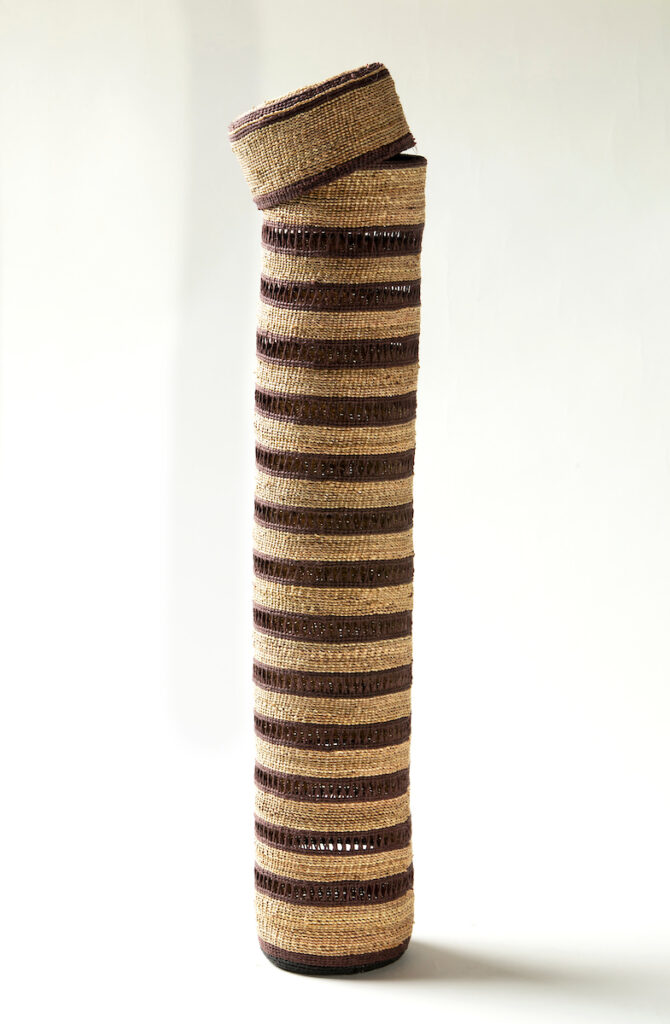
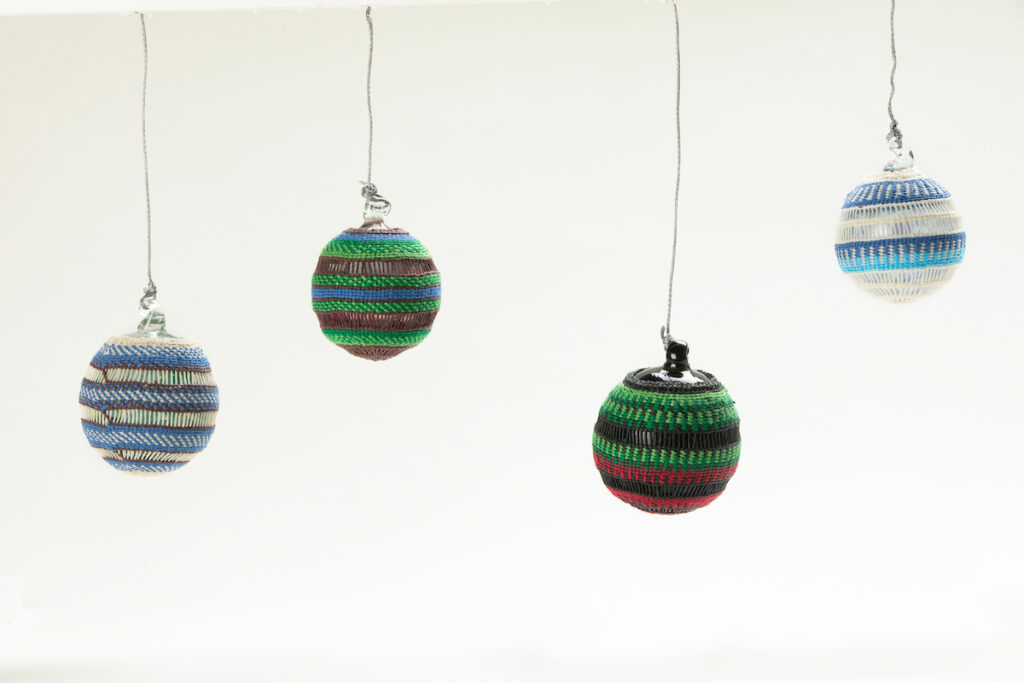
Theresa Woldstad
Theresa Woldstad possesses two masters degrees, an MS in Wildlife Biology and an MFA in Fine Arts with an emphasis in Native Arts. It was her wacky love of fisheries and wildlife law that drew her to the Native arts due to their incorporation of many natural resources. Often her art reflects the complex regulatory narrative of natural artistic resource management, while actively celebrating the diverse collaborations between Indigenous artists and management agencies. This contrast of academic cultures has greatly influenced her art as she tries to view Indigenous art as both analogous yet distinct from the scientific community.
